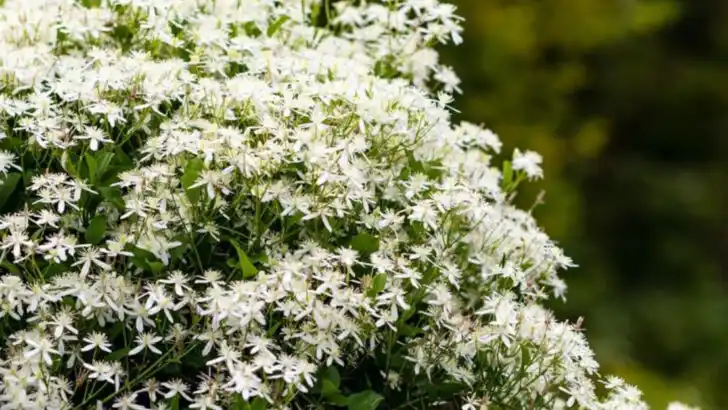Not every garden gets all-day sunshine—and that’s not a bad thing. Shady spaces can actually offer the perfect conditions for some of the most beautiful, underrated flowering vines out there. Whether your balcony is blocked by buildings, your yard is nestled beneath trees, or you’re working with a north-facing wall, there are vines that not only tolerate the shade—but absolutely thrive in it.
What surprises most gardeners is that some shade-loving vines actually produce huge, vibrant blooms—rivaling even sun-drenched plants in color and drama. These climbers don’t just survive with less light; many of them prefer it, using dappled conditions to stretch, spiral, and soften vertical surfaces with lush foliage and bold flowers. And the best part? Most require very little maintenance once they’re established.
In this list, we’re sharing 16 of the best flowering vines that flourish in low light and reward you with stunning growth all season long. Whether you want to cover a fence, frame a doorway, or create a romantic green screen, these plants will help you make a big visual impact—without battling for sunlight.
Clematis ‘Nelly Moser’
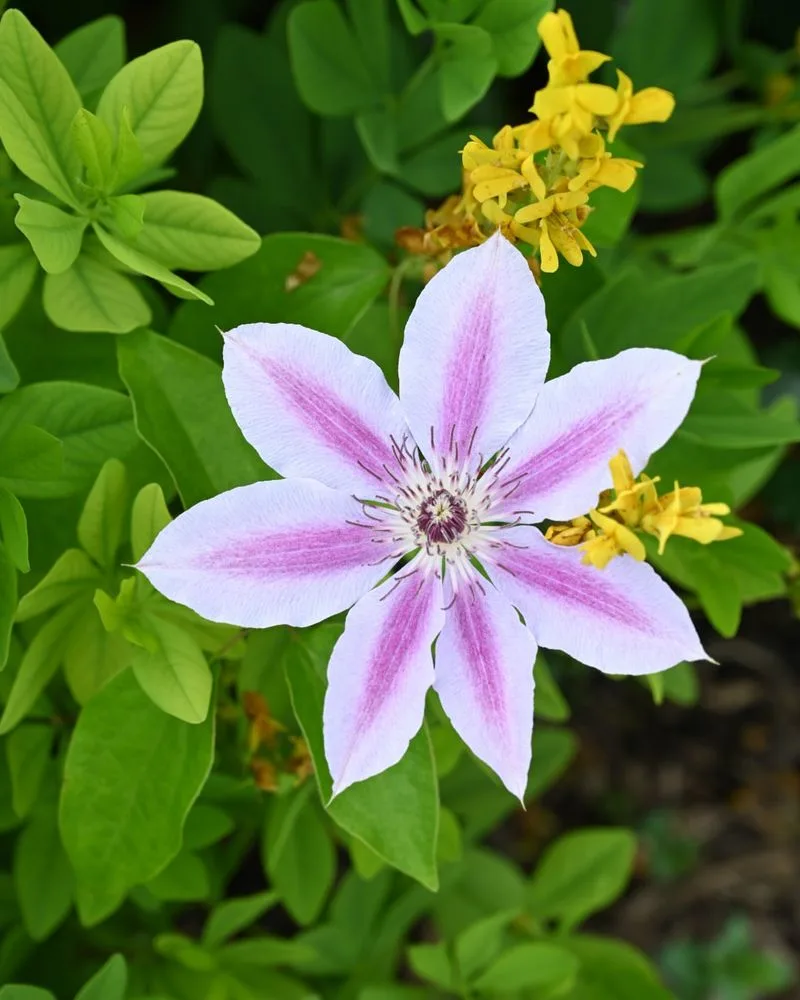
Clematis ‘Nelly Moser’ defies expectations with its striking blooms that brighten even the shadiest spots. Known for its large, star-shaped flowers, this vine can transform an ordinary fence into a floral masterpiece. The pink stripes running down the center of each petal add an artistic touch to any garden setting. Despite preferring cooler environments, it doesn’t shy away from putting on a spectacular show. An excellent choice for gardeners seeking to bring life to a quiet corner. Did you know? This variety has been captivating garden enthusiasts since the late 19th century.
Japanese Honeysuckle
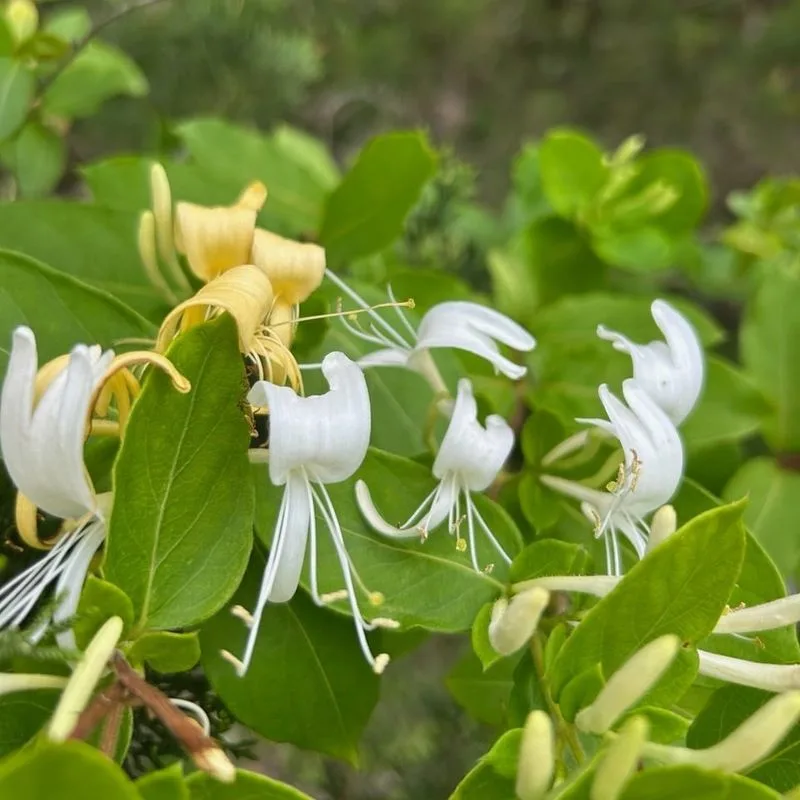
Renowned for its sweet fragrance, Japanese Honeysuckle is a charming addition to shaded gardens. The vine’s delicate white and yellow flowers exude a warm scent that invites tranquility. Its ability to thrive in low light conditions makes it an adaptable plant for various garden designs. Although it can grow aggressively, regular pruning keeps it in check, allowing its beauty to shine without overwhelming its surroundings. Fun fact: In many cultures, honeysuckle is associated with the bonds of love and affection, making it a sentimental favorite among gardeners.
Virginia Creeper
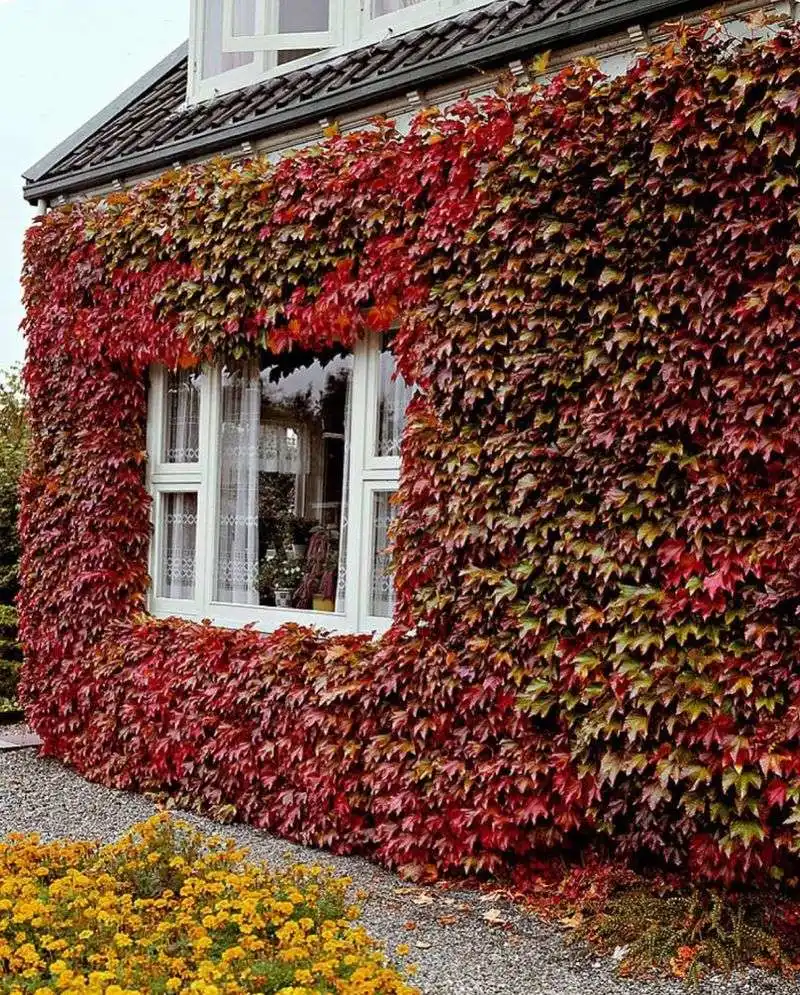
Virginia Creeper is a vine that brings seasonal drama to shaded areas. Famous for its lush green leaves that turn a fiery red in the fall, it adds a burst of color year-round. This vine is particularly adept at clinging to surfaces, making it ideal for covering walls, fences, or arbors with ease. Although often mistaken for poison ivy, it is harmless and offers a striking aesthetic. Did you know? Its adaptability makes it a natural choice for both novice and experienced gardeners looking to fill a shady space.
Ivy (Hedera helix)
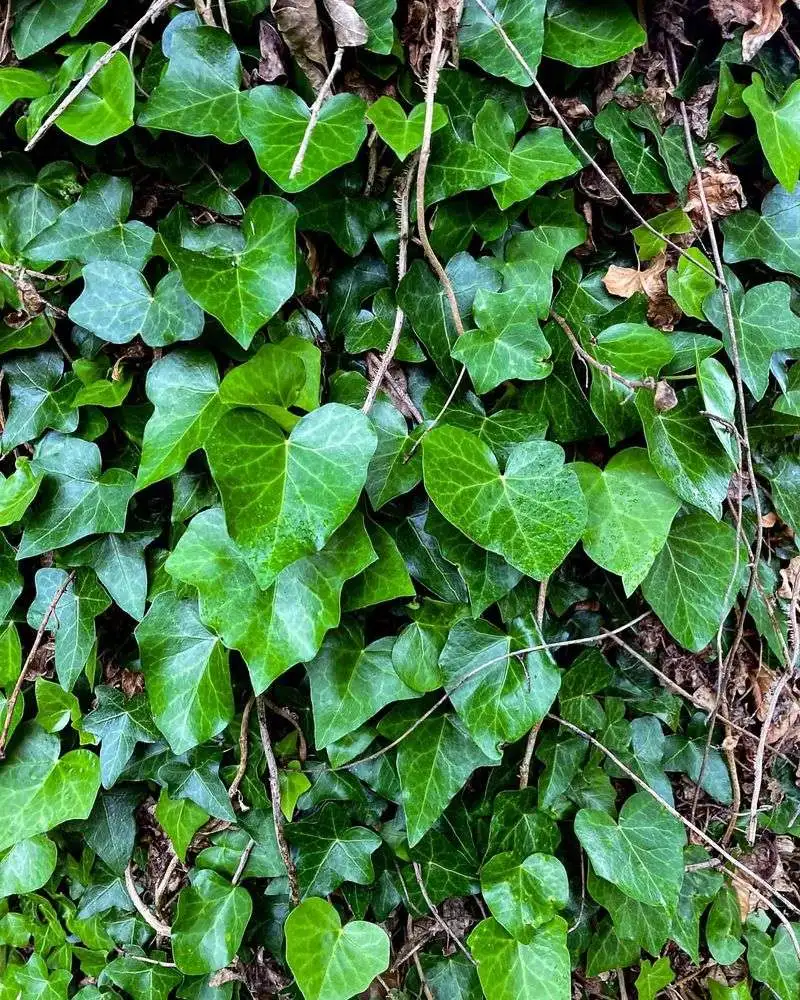
Timeless and elegant, Ivy is synonymous with classic garden charm. Its glossy, evergreen leaves provide a perpetual green backdrop, perfect for adding depth to shaded spaces. Aside from its beauty, this vine is known for its hardiness and ability to thrive in challenging conditions. Often seen gracing the walls of historic buildings, Ivy brings a touch of old-world elegance wherever it grows. Fun fact: In ancient times, Ivy was a symbol of fidelity and eternal life, frequently used in wreaths for celebrations.
Sweet Autumn Clematis
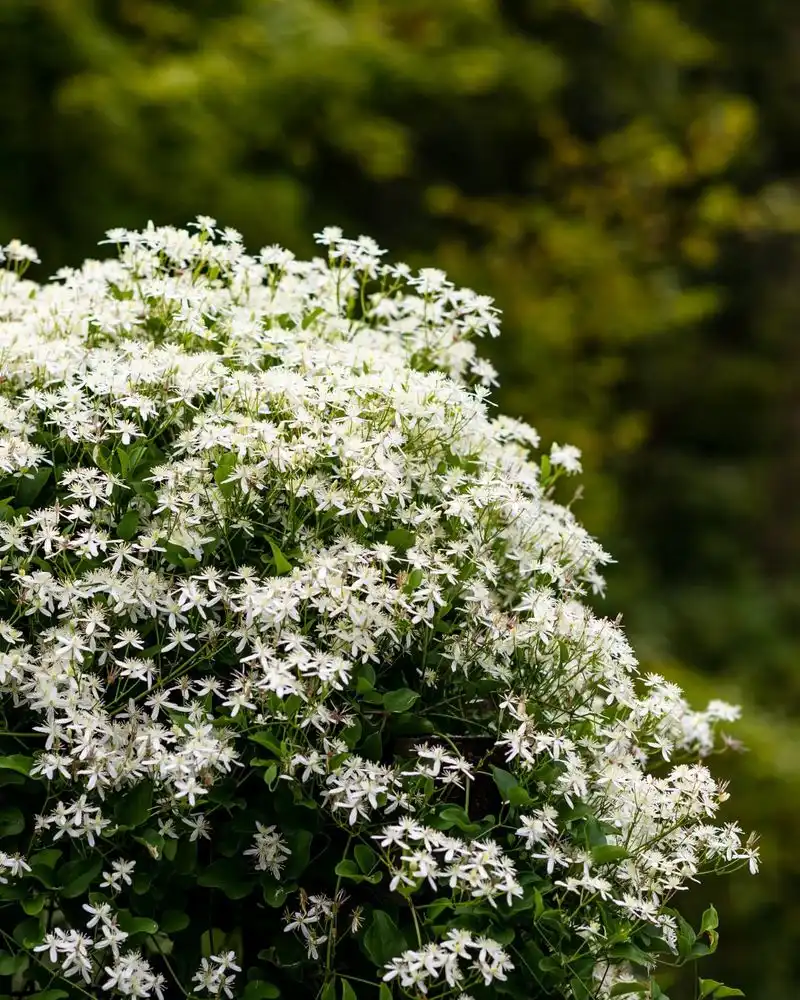
Sweet Autumn Clematis captivates with its clouds of small, fragrant white flowers. A late bloomer, it offers a stunning display at the end of summer into fall, when many other plants are fading. This vine’s vigorous growth makes it a lively addition to shaded trellises or arbors. The sweet scent of its blossoms adds an aromatic dimension to garden spaces. Did you know? Despite its delicate appearance, Sweet Autumn Clematis is remarkably resilient and can handle a range of growing conditions.
Climbing Hydrangea
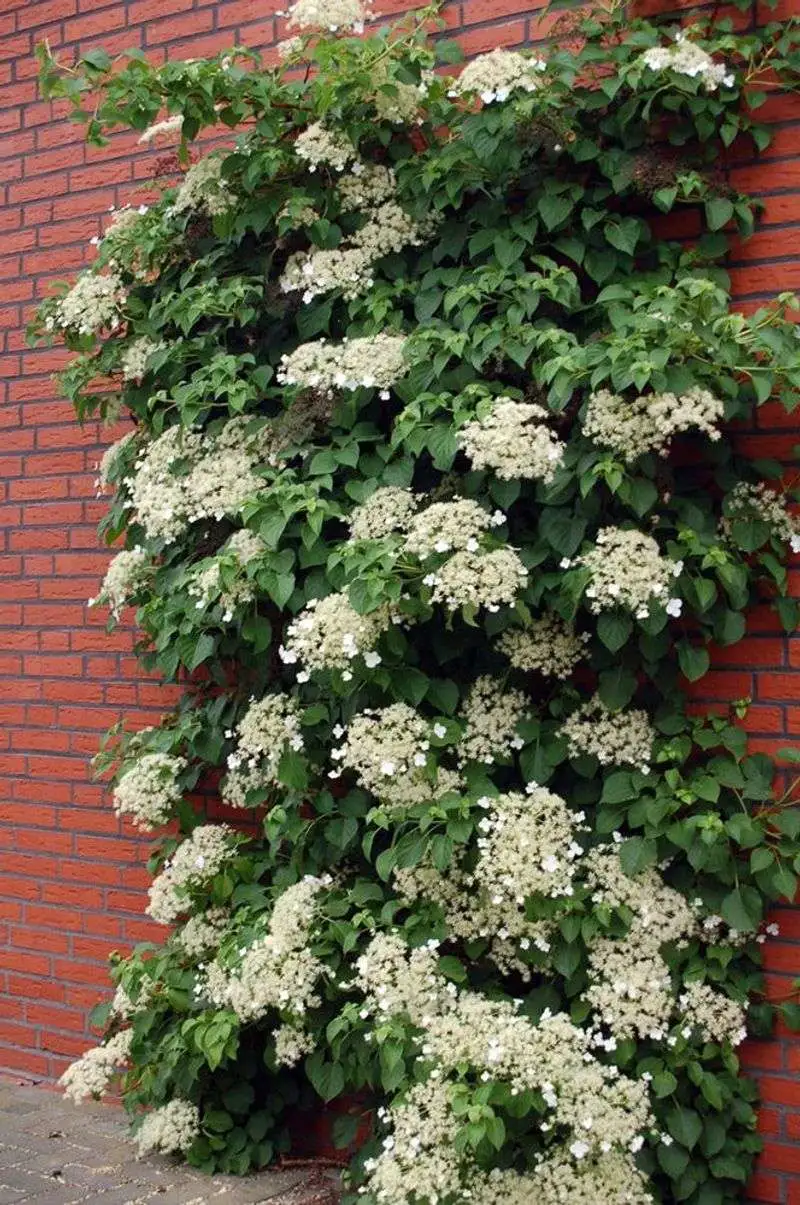
Climbing Hydrangea is a vine of beauty and substance, known for its lush, white flower clusters and peeling bark that adds winter interest. Its ability to cling to surfaces without support makes it a favorite for covering unsightly walls or fences. The vine’s graceful blooms and rich foliage create a serene atmosphere in any shaded garden. Although it takes a few years to establish, the wait is well worth the visual reward. Fun fact: The peeling bark of Climbing Hydrangea provides a unique textural contrast in the garden year-round.
Star Jasmine
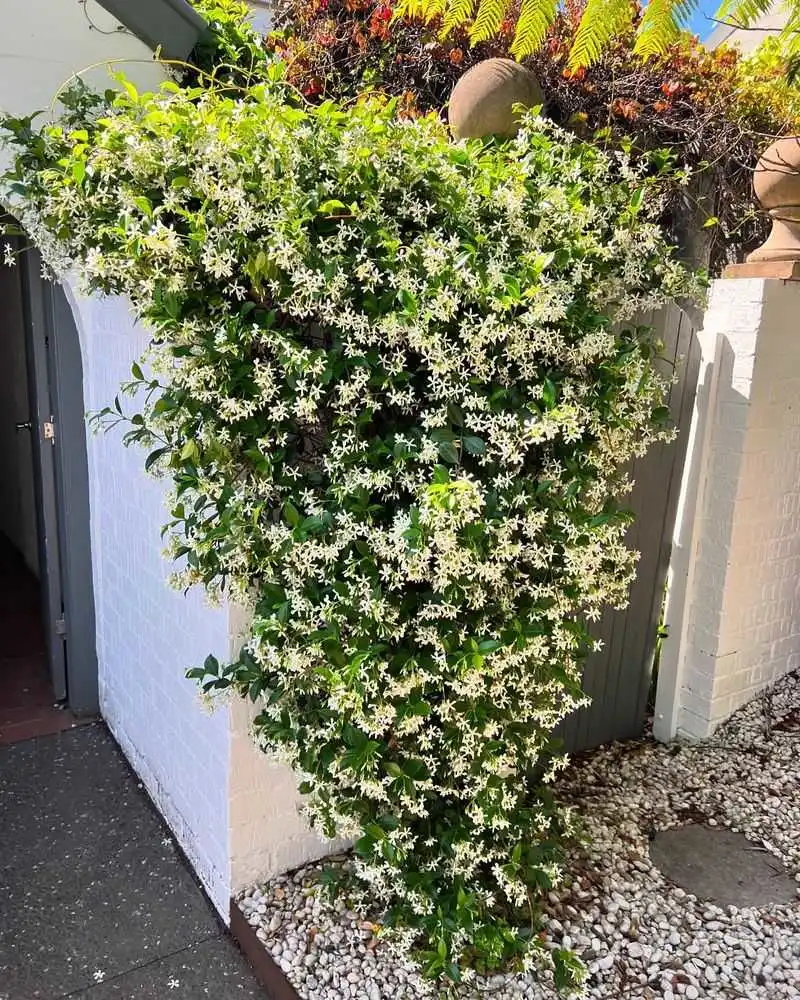
Star Jasmine is a vine beloved for its intoxicating fragrance and starry white blooms. Often used to adorn shaded patios or pergolas, its scent transforms outdoor spaces into aromatic retreats. Known for its vigorous growth, this vine can cover structures quickly, providing a lush green backdrop punctuated with clusters of flowers. Despite its delicate appearance, Star Jasmine is a hardy plant, capable of withstanding various environmental conditions. Fun fact: In some cultures, Jasmine symbolizes love and beauty, often used in ceremonies and celebrations.
Trumpet Vine
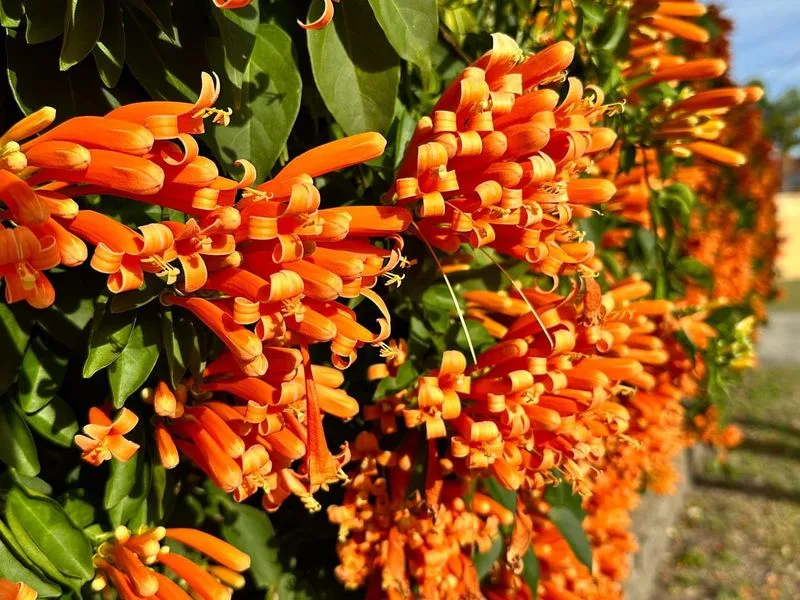
With its bold, trumpet-shaped flowers, the Trumpet Vine is a showstopper in shaded gardens. The bright orange blooms attract hummingbirds, bringing dynamic life to any landscape. Known for its robust growth, it can quickly transform a bare structure into a stunning floral display. However, keeping it pruned is essential to manage its exuberant nature. Did you know? The Trumpet Vine is native to the southeastern United States and has been a garden favorite for generations, celebrated for its resilience and beauty.
Boston Ivy
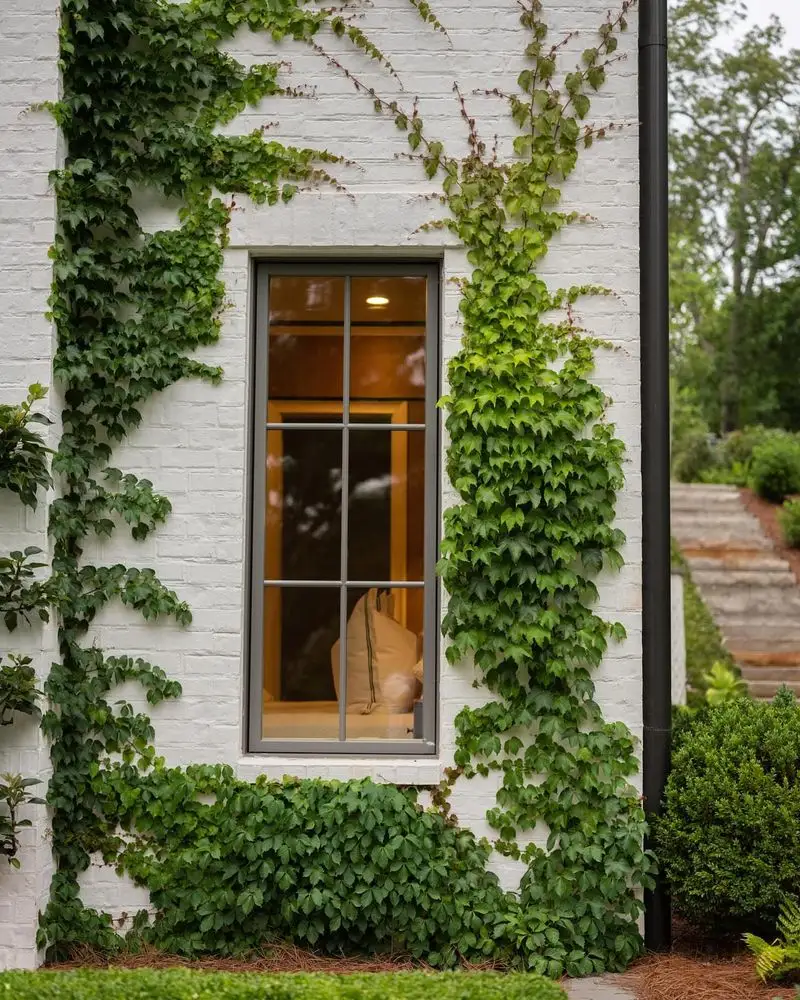
Boston Ivy offers a spectacular seasonal transformation with its leaves shifting from lush green to a vibrant crimson in fall. This vine is adept at covering walls and fences, providing a dense green canopy in summer and a fiery display in autumn. Its ability to thrive in shaded conditions makes it a versatile choice for gardeners looking to add depth and color without direct sunlight. Fun fact: Despite its name, Boston Ivy is native to Asia and has become popular worldwide for its ornamental appeal.
Bittersweet Vine
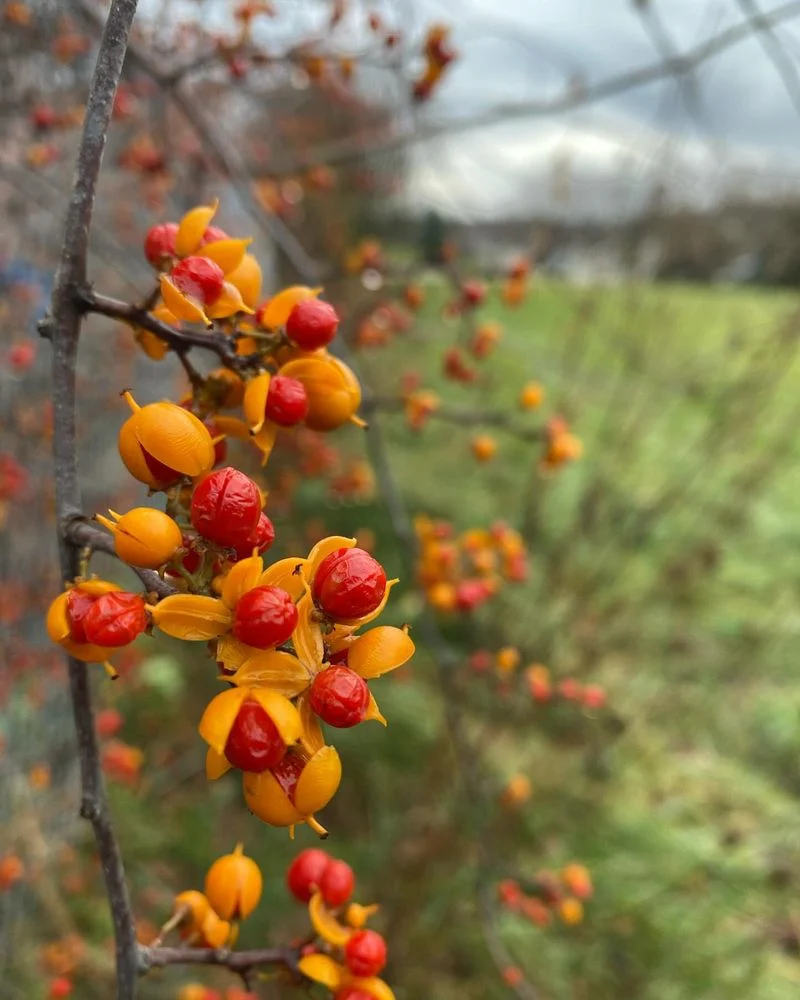
Bittersweet Vine brings a burst of color with its bright orange berries that contrast against its green leaves. This vine is known for its twisting growth habit, which adds an intricate visual element to garden designs. While it prefers shaded areas, it thrives with minimal care, making it a low-maintenance choice for busy gardeners. It’s important to plant the American variety as it is less invasive than its Asian counterpart. Did you know? Bittersweet has been used in traditional crafts, such as wreaths and decorations, for its vibrant colors.
Chocolate Vine (Akebia quinata)
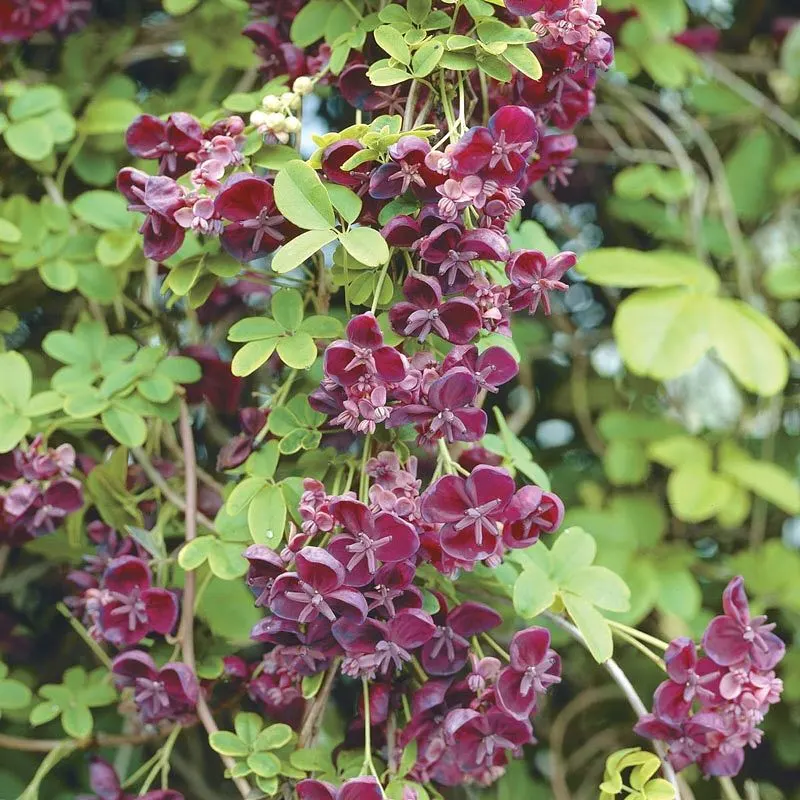
Chocolate Vine intrigues with its unique purple flowers and lush, green foliage. Known for its rapid growth, this vine can quickly cover trellises and arbors, offering a whimsical touch to shaded spaces. The rich color of its blooms adds depth and contrast to garden palettes. Aside from aesthetics, it produces edible fruit, adding a practical element to its beauty. Fun fact: The name “Chocolate Vine” comes from the slight chocolate scent released by its flowers, making it a delightful sensory experience.
Dutchman’s Pipe (Aristolochia macrophylla)
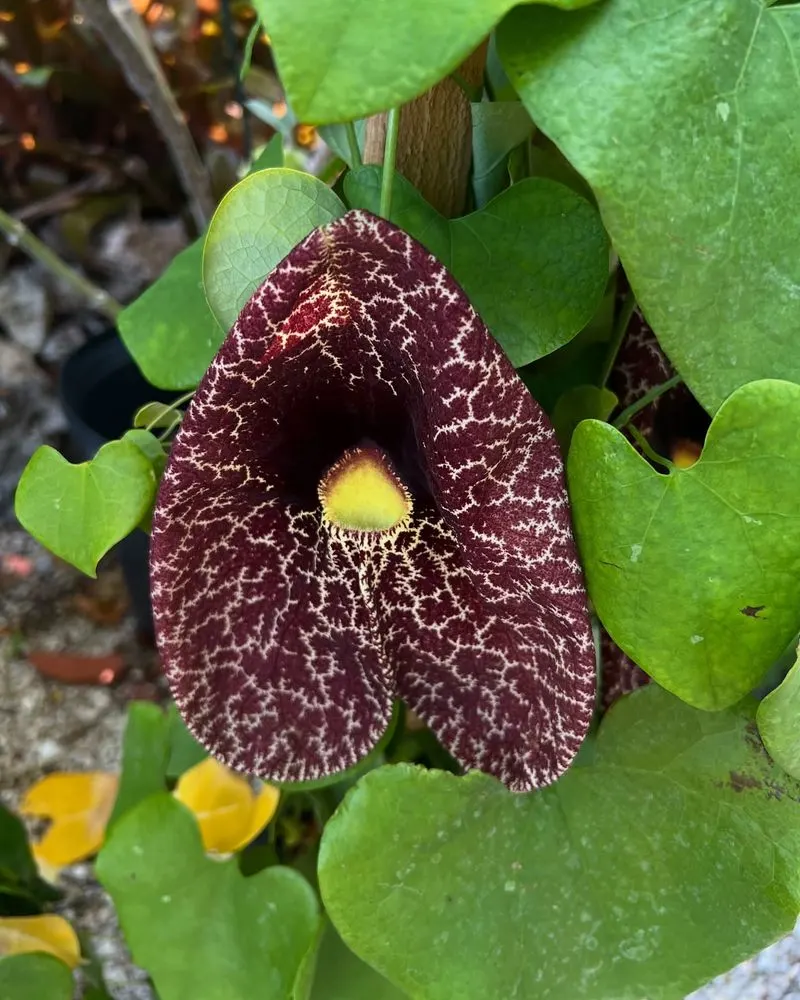
Dutchman’s Pipe is a vine with an exotic flair, showcasing heart-shaped leaves and curious pipe-shaped flowers. Its dense foliage creates a lush backdrop, ideal for providing privacy in shaded areas. The unusual blooms add an intriguing element, sparking curiosity among garden visitors. Although it grows slowly, its eventual coverage is well worth the patience. Fun fact: Historically, Dutchman’s Pipe has been used as a natural air filter, making it both a decorative and functional choice for eco-conscious gardeners.
Evergreen Clematis (Clematis armandii)
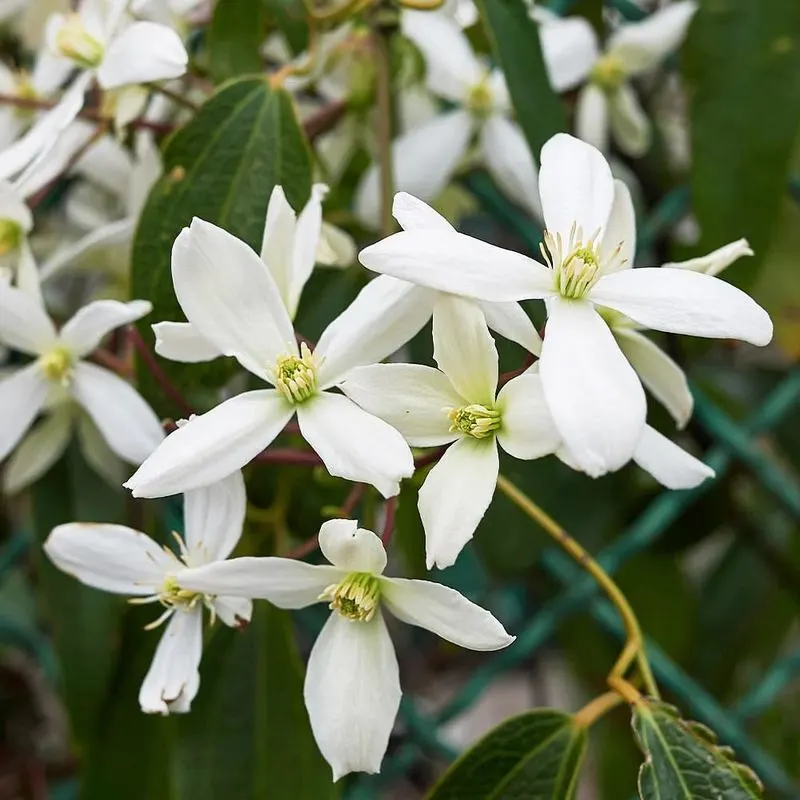
Evergreen Clematis enchants with its creamy white flowers and glossy, evergreen leaves. It blooms in early spring, offering a refreshing start to the growing season in shaded gardens. This vine is prized for its ability to maintain foliage throughout the year, providing continuous greenery even in winter months. Its fragrant flowers add a sensory delight to the visual appeal. Did you know? Native to China, Evergreen Clematis has been cultivated for its ornamental beauty and fragrance worldwide.
Passionflower Vine
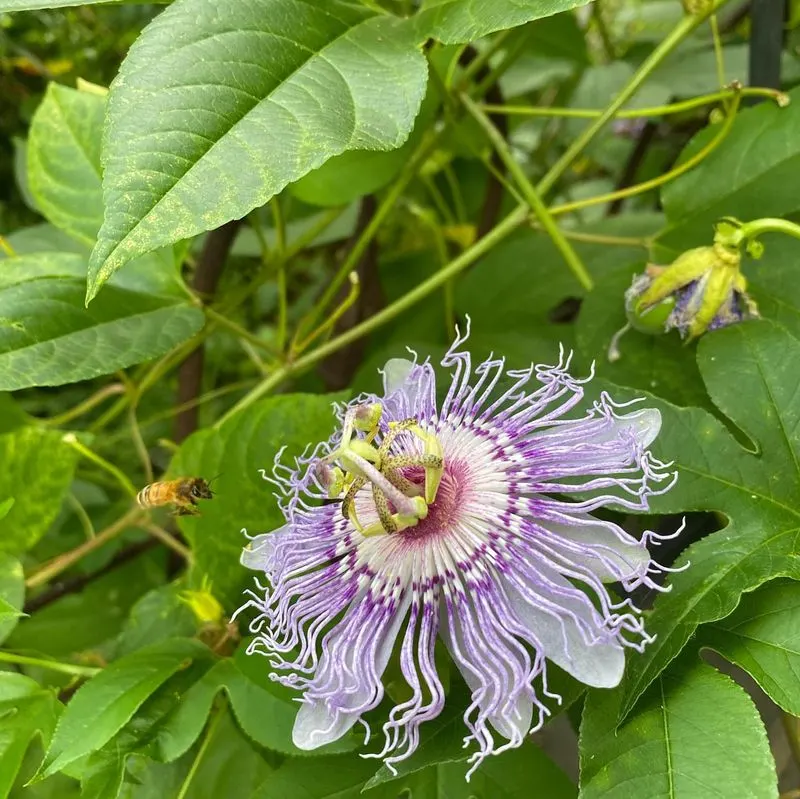
Passionflower Vine captivates with its intricate, alien-like flowers that seem almost too exotic for shaded gardens. These blooms, with their intricate patterns and vibrant colors, are a conversation starter. The vine’s vigorous growth ensures quick coverage of any structure, adding an exotic flair to garden spaces. Aside from its beauty, the flowers and fruit are often used in herbal remedies, highlighting its utility. Fun fact: The unique structure of the Passionflower symbolizes various aspects of the Christian Passion story, hence its name.
Algerian Ivy
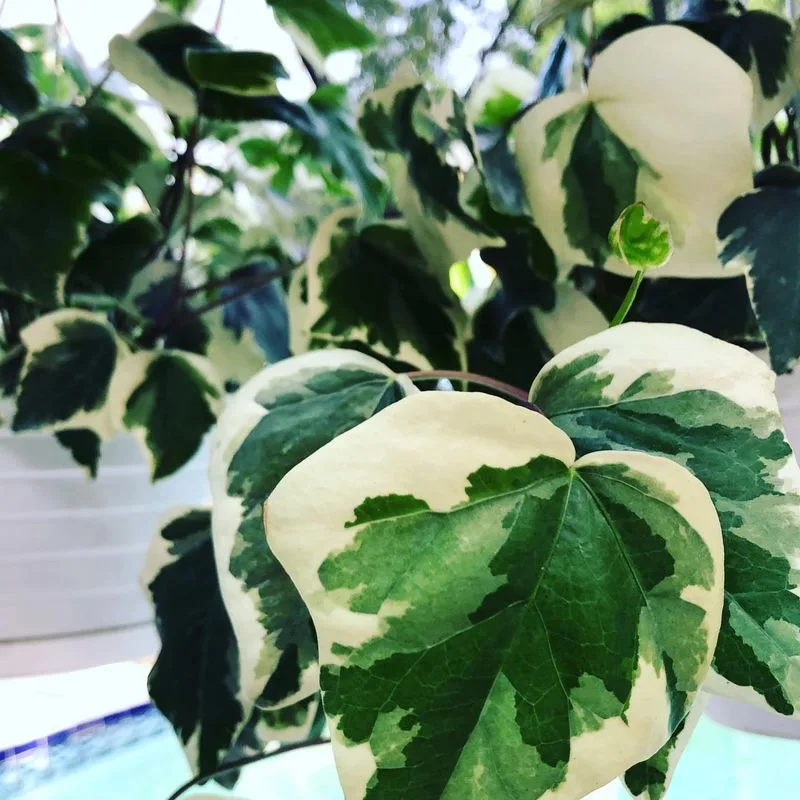
Algerian Ivy is the robust cousin of the traditional English Ivy, known for its broader leaves and vigorous growth. This vine is a resilient choice for shaded areas, covering walls or ground with dense foliage. Its glossy leaves provide a brilliant green canvas, enhancing the visual appeal of any shaded garden nook. Ideal for creating a serene environment, it requires little maintenance once established. Fun fact: Algerian Ivy is often used in urban environments to help manage air pollution, thanks to its dense leaf coverage.
Five-Leaved Akebia (Akebia quinata)
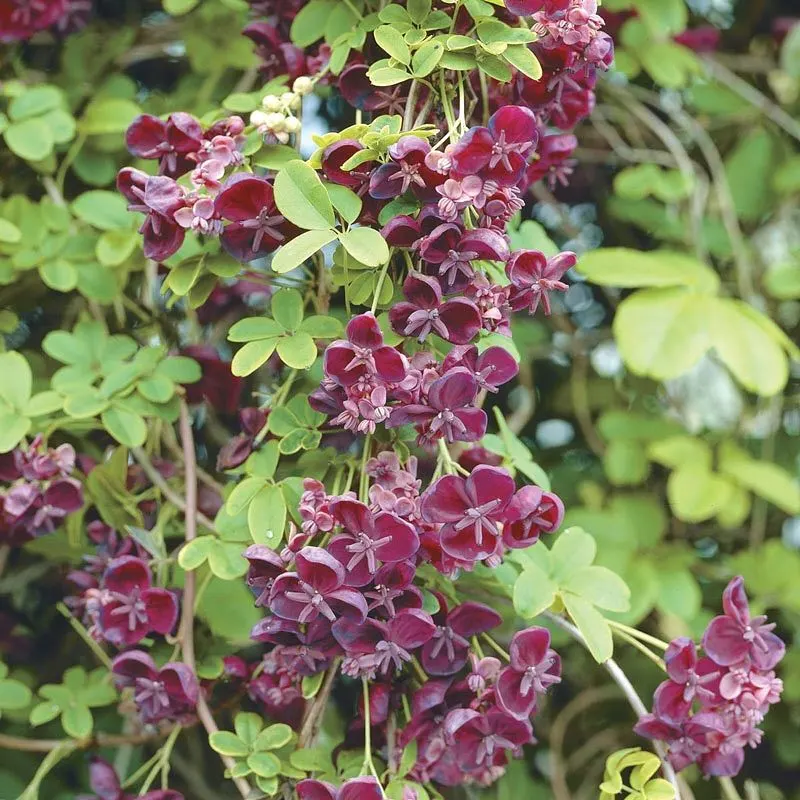
Five-Leaved Akebia, also known as Chocolate Vine, offers clusters of pinkish-purple flowers that contrast beautifully with its lush green foliage. The vine’s ability to thrive in poor soil conditions makes it a versatile choice for challenging spots in shaded gardens. Its rapid growth can quickly create a natural screen for privacy or decoration. Beyond its ornamental value, the fruit is edible and adds an unusual element to garden harvests. Did you know? The vine is often used in traditional medicines for its supposed health benefits.

